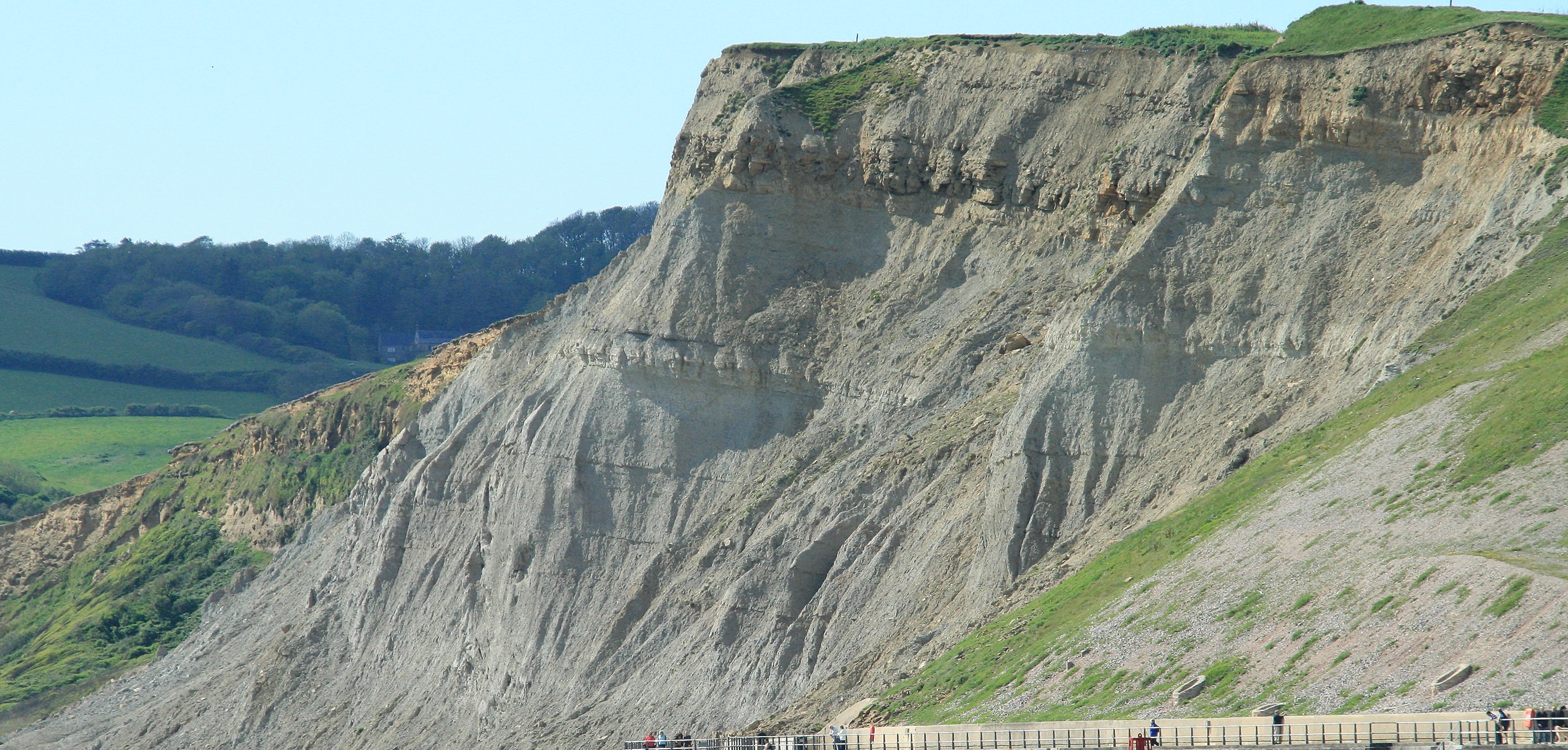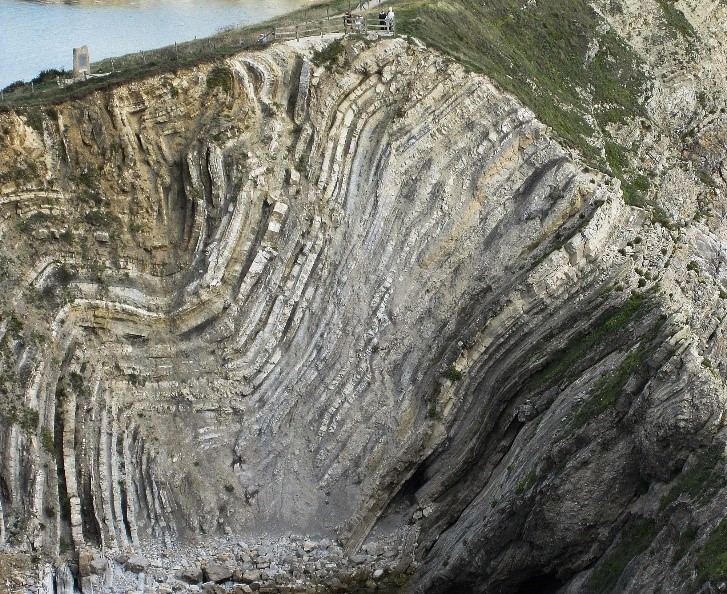
Other Influences on Rocks

 |
West Bay Geology
Other Influences on Rocks |
 |
One complication here is that the erosion of the younger rocks (the bit of the cake that was cut off), was not even. In some places bits of the younger rock have been left behind, like crumbs on the cake, probably due to very local features that meant that erosion was reduced at this location. This means that as well as the Younger in the East pattern there are blocks of even Younger still rocks sat around. The tops of Thorncombe Beacon and Golden Cap are such blocks (or cake crumbs!), they are of Cretaceous (not Jurassic age). The White Cliffs of Beer are also such a block. The Geological term here is that these outcrops are "Outliers", of Cretaceous age Chalk. Most of the high points in Dorset are actually outliers of younger rock sat upon the uneven eroded ancient land surface of Jurassic rocks. Where such outliers allow water to flow through them (for example when they are sandstones), and where this sits on Jurassic rocks that are made of Clay and hence less porous you get springs with the water collected in the younger rocks being forced out when it percolates down to the old Jurassic land surface. The Victorian geologists who first mapped out the rocks in Dorset were well aware of this, and used the existence of springs to infer with very good accuracy, the position of the Cretaceous/Jurassic boundary even when the actual bedrock is buried under vegetation and soil.
Such an "age gap" between contiguous rocks (the Geological term is an "Unconformity") as well as sometimes being indicated by lines of springs can also lead to a sharp (in geographical terms) boundary between one type of rocks and another and this is often visible in the overall topography that we see today. The tops of Thorncombe Beacon and Golden Cap are younger Cretaceous rocks sitting on top of a previously eroded and worn down Jurassic landscape. If you walk up Thorncombe the change from Jurassic to Cretaceous is very clear, it is the point where (at least for me) my legs tell me that things have suddenly got much steeper.
The reason for the general tilt of rocks towards the West is not completely clear, and there are different general tilts of the crust in other parts of the country. In some places these general tilts are accentuated by much more dramatic local folding. The nearest example I can think of would be the cliffs around Lulworth, (see the picture below of Stair Hole, Lulworth), were you can see right angle bends and folds in the rocks. These folds are caused as a result of crustal movements, to go back to a cake analogy image what happens when two piece of layered cake are pushed up hard against each other but at a speed that forces the rocks to "bend" rather than to "fault"

Beyond such dramatic folding it gets to the point where the rocks rather than folding start to behave a bit more like plastic and to merge into each other, both mechanically but also chemically as minerals combine. This leads to the formation of new types of Metamorphic rocks. Luckily we don't need to concern ourselves with such things on our stretch of coast, though if anyone wanted to try rowing around the coast of Northern Scotland this would be a topic of much local interest there.
Next Section - What exactly are Fossils?
Previous Section - Geological Faults
Back to Introduction